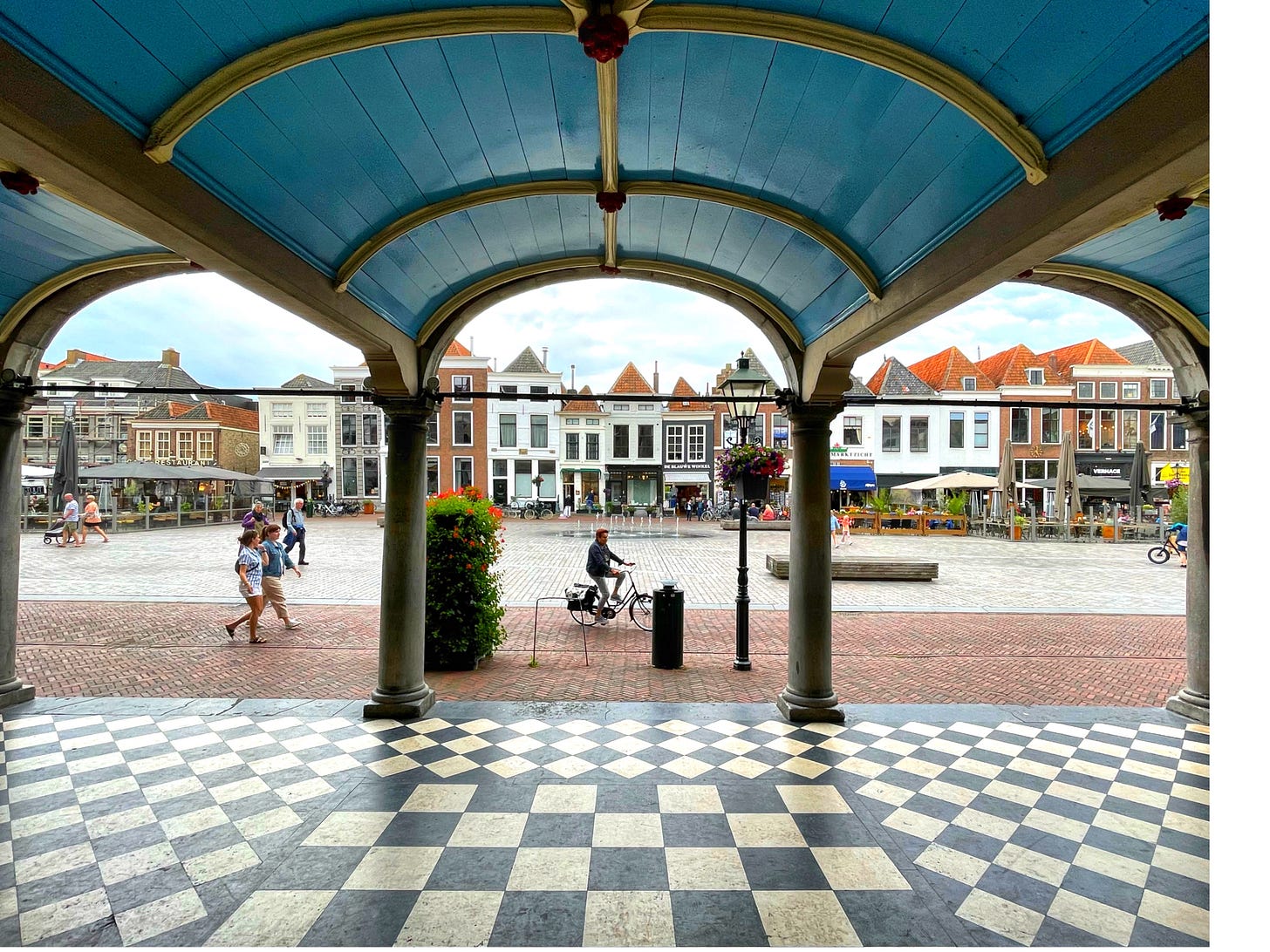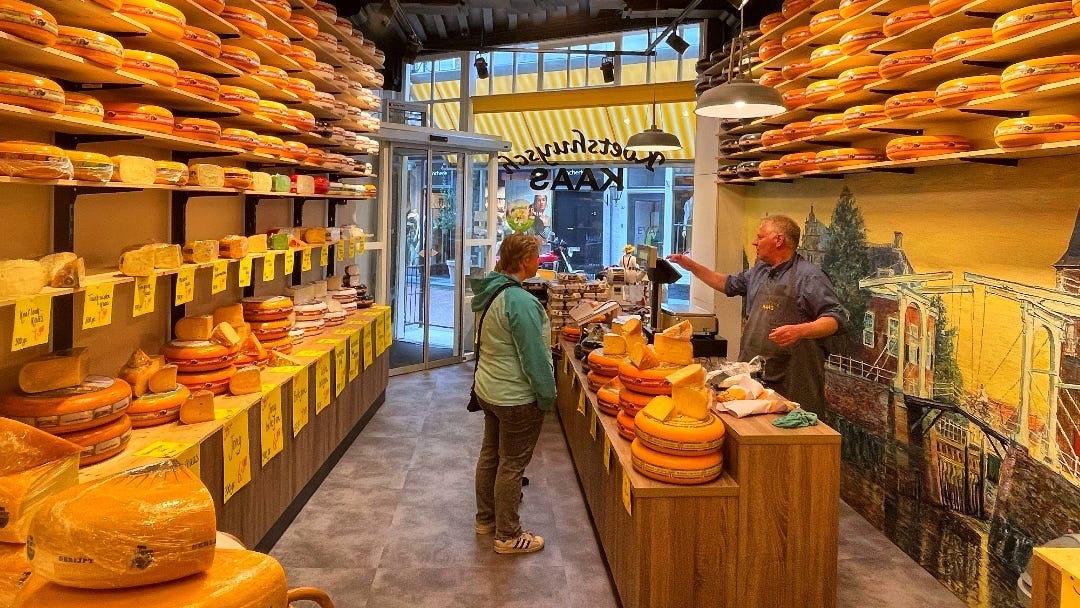Today, I had to do some shopping in Zierikzee, and I took the opportunity to make a two-minute video. It gives you an impression of the biggest town on the island; about one in three of the 33,000 inhabitants of Schouwen-Duiveland live in this pleasant little city where it feels like you are stepping back into history. You might for a moment believe that you are entering an open-air museum with its historic atmosphere.
I would like to thank the paid subscribers who make it possible to produce more articles that are available to all.
It was market day, so the video shows you the small-scale market with its flowers and cheese sellers, and I added a few shots of the old harbor with its traditional sailing ships. I hope all readers will someday get the chance to see this little gem. Tourists to the Netherlands flock to Amsterdam with perhaps an additional one-afternoon trip for a photo shoot in the tulip fields. Maybe you may want to discover another part of the Netherlands next time you're here; the island is only about a 90-minute drive from Schiphol airport.
History
Zierikzee has a long history; I will just pick a few historical facts to share. In 976, Zierikzee appears for the first time under the name Creka (creek) in a charter in which the St. Bavo's Abbey is confirmed in her possessions by Emperor Otto II. Then, the name Zierikzee appears for the first time, as Siricasha, in a charter from 1156.
In 1248 the city rights of Zierikzee were confirmed and extended by Count Willem II of Holland. The first city rights were granted between 1217 and 1220, but the exact date is unknown. At the end of the Middle Ages, Zierikzee was a strategically important place in Zeeland and the surrounding area.
In September 1575, Spanish troops landed on Schouwen and Duiveland and laid siege to Zierikzee. The city surrendered on June 29, 1576, but four months later, a mutiny arose among the Spanish soldiers over arrears, after which the Spaniards left.
Although Zierikzee has been besieged on multiple occasions and several massive fires have raged, the city's historic center has retained its distinctive character. The medieval city walls are still partially visible in the historic center, with the Nobelpoort, Noordhavenpoort, and Zuidhavenpoort serving as tourist attractions.
While reading about Zierikzee's history, I found that in 1735, a slave fund was set up in the city to redeem captured Zierikzee sailors. It often happened in the 18th century that sailors were enslaved by Barbary pirates. The slave treasury continued to exist even after the Arab slave trade ended in the 19th century. After the flood disaster of 1953, the money from the slave fund financed the construction of two new kindergartens.
My house on the island was built in 1947, right where the previous home was destroyed by a bomb in 1945. But a much more unusual bombing occurred in Zierikzee during the First World War (when the Netherlands remained neutral). On April 30, 1917, a lost British pilot dropped six bombs on the city. The pilot had confused Zierikzee with Zeebrugge; there were three casualties. And to end with one more war-related fact about the town: after the Second World War, about 30 million kilos of ammunition were dumped in the Oosterschelde near Zierikzee, making this ammunition dump the largest in the Netherlands.
I will soon travel more in Europe but later this summer I will be back in Zierikzee and show you more of this town and this province.
Enjoy the two-minute video impression, which ends in a lovely open-air cafe where I drank a coffee.
Please subscribe to this newsletter if you would like to follow and support my travel and stories.
Or you can buy me a coffee ☕️ Via this link:
In case you missed it, these are some recent posts:
And this is what I wrote a year ago in this newsletter:
Notes:
https://www.mooistedorpjes.nl/nederland/zeeland/zierikzee/
https://nl.wikipedia.org/wiki/Zierikzee










What a lovely city! Thank you for taking us along with you on your walk!
Hi Alex ! Thanks very much for this pleasant video and article. Really, a welcoming little city!!
And what a beautiful ambience with this sun and all the greenery!
Happy stay in your charming city ! 👩🌾👋🌿🌺